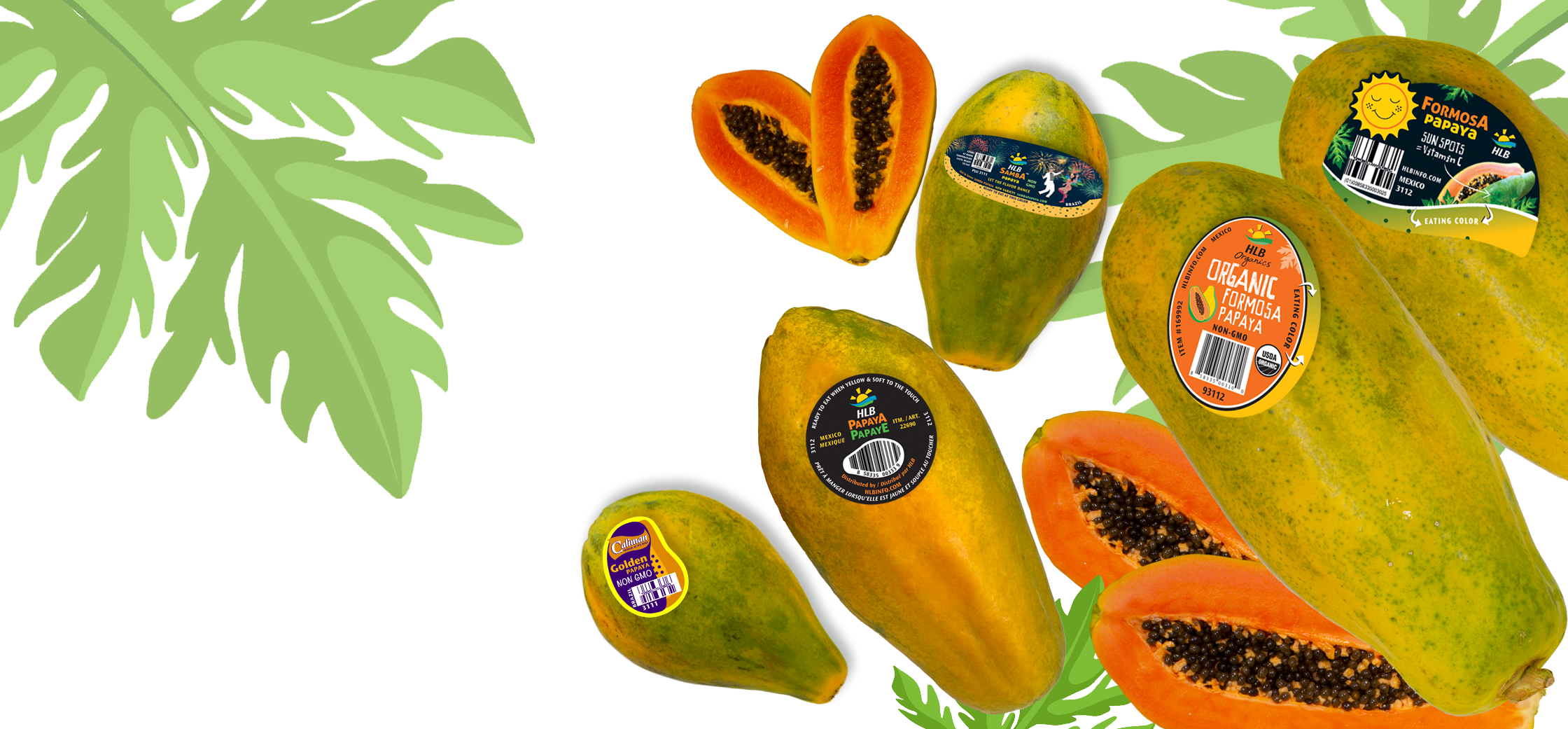Given a food as delicious as papaya, it’s hard to believe it’s good for you.
But even Pope John Paul II has been prescribed a papaya treatment to help ease the symptoms of Parkinson’s disease, according to the BBC News.
And recent research suggests eating papaya may boost your immune system against such strong enemies as SARS (severe acute respiratory syndrome). As a result, you can’t even find a papaya in Toronto’s Chinatown, where this virulent virus is a threat, according to Homero Levy de Barros, president of HLB Tropical Food USA in Plantation. He imports and distributes Caliman papayas from Brazil.
Plus, he says, a papaya has more vitamin C and potassium than two oranges and has fewer calories. In fact, its calorie count is half that of a large banana. It has more vitamin A than carrots and is an abundant source of the antioxidant vitamin E.
If that doesn’t make this a miracle fruit, just try rubbing it on tough meat. The papain, an enzyme in the papaya, is used in commerical meat tenderizers, and it also acts as a natural digestif in humans. At the beach, papaya is a balm for jellyfish stings.
But papayas are just starting to catch on in the United States, where consumption has almost doubled since 1998 to 84.4 tons per year in 2001. Compare that to a city such as Sao Paulo, Brazil, where they eat 18,000 tons of papaya a day.
Levy de Barros grew up in that country, and he always started his day with papaya.
“It’s a way to protect your health,” he says. “People eat papayas because they want to live longer and better.”
To this day, he makes himself what he calls a “vitamin bomb.” That’s papaya pureed with watermelon, mango, bananas, a little milk and some ice.
There are two popular varieties of papayas that are readily available: the Capoho or Hawaiian type weighs about 1 pound each with yellow flesh that is very sweet. Then there’s the Maradol or Mexican that is larger (can grow to 20 pounds and be a foot in diameter) and that’s not as sweet. It comes from Belize, the Dominican Republic, Brazil and Costa Rica.
Of course, papayas can be grown in South Florida back yards, but you have to keep an eye on these fussy trees that can’t take extremes of temperature or moisture.
Although his main domestic markets are California and Florida, Levy de Barros says most Americans haven’t had a chance to savor papaya at its best. That’s because stores often stock papayas picked when they are green so they can be shipped easily. The trouble is that a green papaya will turn yellow off the tree, but it won’t become any sweeter than the day it was harvested.
Levy de Barros, who supplies Costco and Publix with the fruit, says the trick is to educate produce people to purchase papayas left on the trees long enough to turn a little yellow. A green one that turns yellow in the store will be well-colored but it will look shrivelled and won’t be very sweet. Avoid those.
You’ll know a ripe papaya because it will have what’s called transitional color (going from green to yellow), have a pleasant aroma and give to gentle pressure when you touch it. Don’t select fruit with bruises or black spots, although small black dots on the outside are natural. “These fruits are out in the weather being hit by leaves and wind, so some markings are natural,” Levy de Barros says.
At home, store papaya at room temperature (77 degrees) until it is the proper transitional color (if stored lower than 46 degrees, it interupts the ripening process).
To truly savor a ripe papaya, slice it in half, remove the black seeds that look like buckshot or ball bearings and scoop into the orange/pink flesh with a spoon.
That’s how executive chef James Reaux of the Boca Raton Resort and Club likes his. But having spent 12 years working in Hawaii, he’s come up with some more creative uses. Hence his Macadamia-Crusted Stuffed Papayas that are filled with cottage and cream cheeses flavored with curry powder and chutney, topped with macadamia nuts and baked until golden. They make a sweet first course or dessert, and they are perfect for brunch.
At Brasserie Las Olas in Fort Lauderdale, chef Gerald Leskody likes to use this fruit in a barbecue sauce that also features root beer — IBC Root Beer to be specific. He created this recipe when he owned CafM-i Americain on Duval Street in Key West. He likes the way ripe papaya goes with the flavor of this particular root beer, which he discovered on a foray to the supermarket. This sauce is perfect on chicken, ribs, pork, ham and oily fish, such as salmon, cooked on the grill.
For another way to serve papaya with salmon, try Salmon With Honey-Lime Drizzled Papaya. And chef Norman Van Aken, chef/owner of Norman’s in Coral Gables, features this tropical fruit in his first cookbook Feast of Sunlight (Harvard Common Press, 1997). Here he gives grouper Asian flair by marinating it with soy sauce and sesame oil. Then he grills the fish and serves it with a papaya salsa. Proving, once again, this is a miracle of a fruit for your taste buds, too.
Source: Sun-Sentinel.
Recipes and more here: https://www.sun-sentinel.com/2003/06/12/the-scoop-on-papaya/

